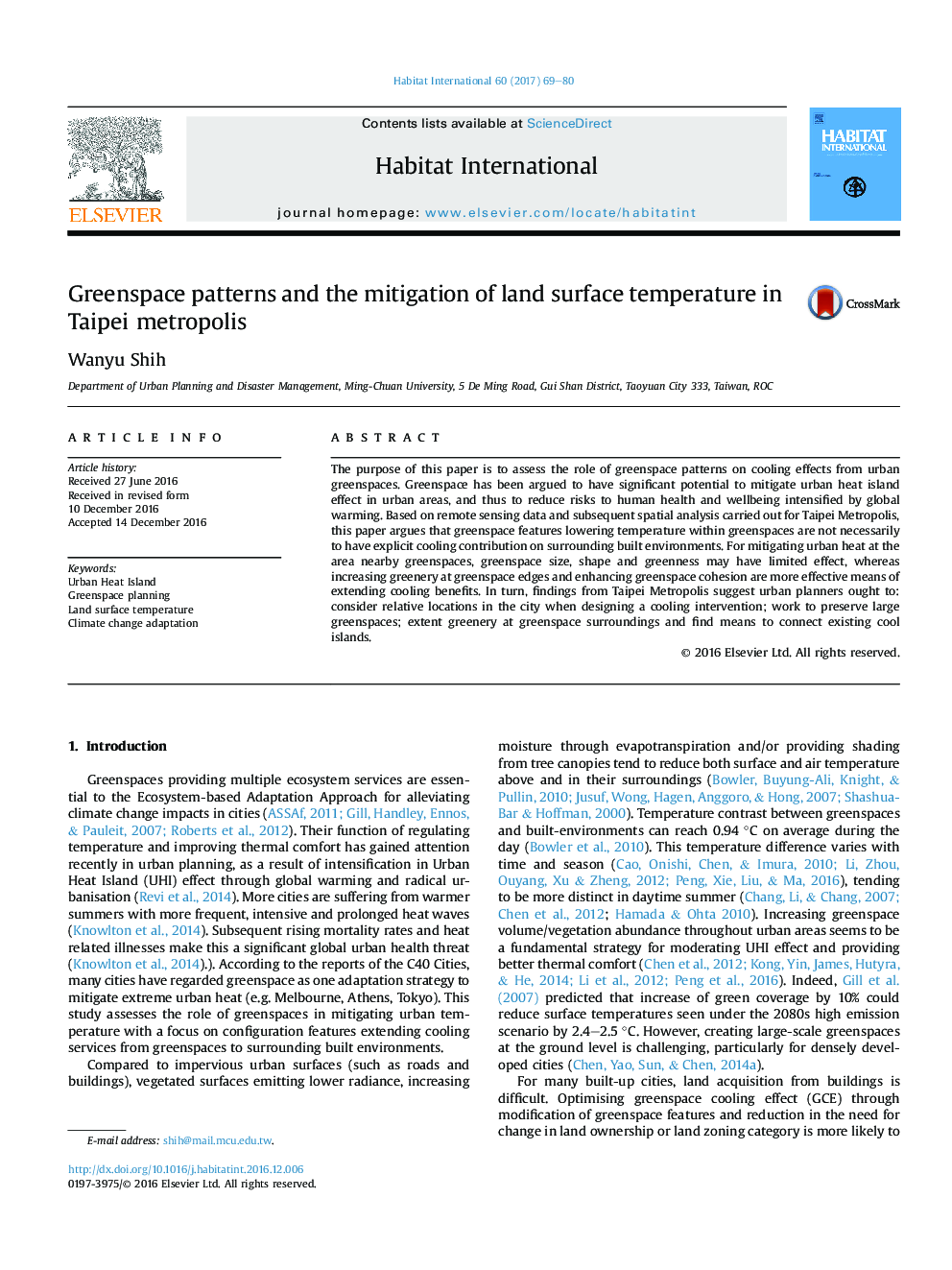| Article ID | Journal | Published Year | Pages | File Type |
|---|---|---|---|---|
| 5114715 | Habitat International | 2017 | 12 Pages |
Abstract
The purpose of this paper is to assess the role of greenspace patterns on cooling effects from urban greenspaces. Greenspace has been argued to have significant potential to mitigate urban heat island effect in urban areas, and thus to reduce risks to human health and wellbeing intensified by global warming. Based on remote sensing data and subsequent spatial analysis carried out for Taipei Metropolis, this paper argues that greenspace features lowering temperature within greenspaces are not necessarily to have explicit cooling contribution on surrounding built environments. For mitigating urban heat at the area nearby greenspaces, greenspace size, shape and greenness may have limited effect, whereas increasing greenery at greenspace edges and enhancing greenspace cohesion are more effective means of extending cooling benefits. In turn, findings from Taipei Metropolis suggest urban planners ought to: consider relative locations in the city when designing a cooling intervention; work to preserve large greenspaces; extent greenery at greenspace surroundings and find means to connect existing cool islands.
Related Topics
Social Sciences and Humanities
Social Sciences
Development
Authors
Wanyu Shih,
